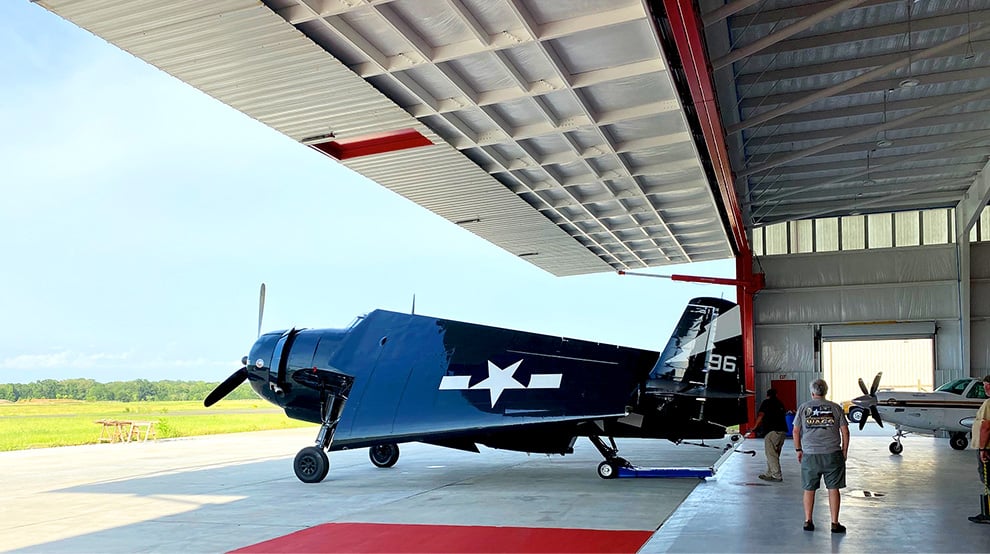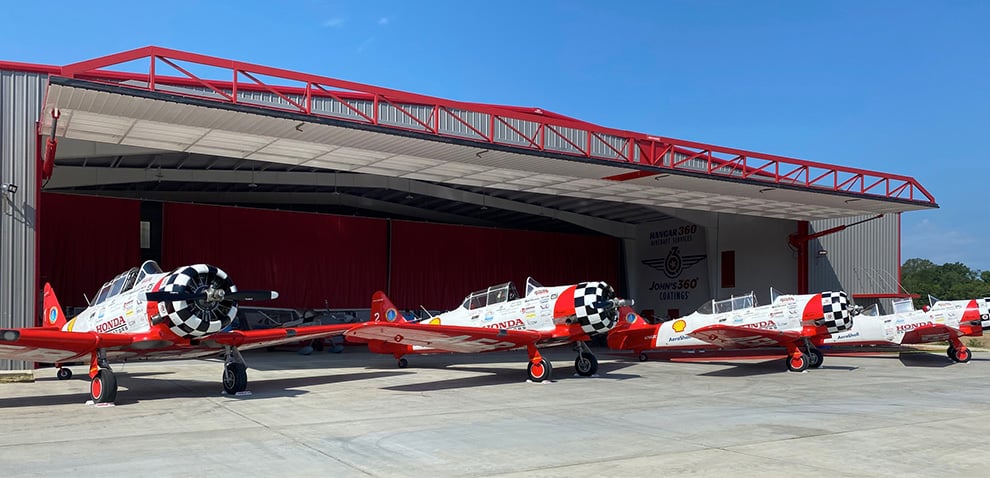Typical characteristics of a tilt-up door...
On tilt-up doors, one-third of the doorframe slides
back into the building when open, similar to old style
garage doors! The doors cylinders are attach to the
side of the doorframe. The door is guided by a
set of rollers that go along for the ride, guiding/
balancing the doorframe back into the building
which results in the loss of valuable headroom!
Remember the Old Style Garage Doors?
Some manufacturers have created an alternative
by building a hydraulic door similar to the old style
garage doors without hinges. The door, when open,
rolls back into the building structure, resulting in loss
of valuable headroom, and it has moving parts, push slides,
cam-rollers, and cam-tracks. The door, when open, teeters on
two pivot pins and the cam-rollers ride in a track that protrudes
back into your building.
Most customers prefer having a hangar door that doesn't intrude into the opening nor the interior, or put its contents at risk in any way.
Two Pins Support the Door When Open.
The door also has (2) pins that support the door when it is in the open position as well as when
it is closed. These two pins are seeing most, if not all of the load. These two pins are all that
would be taking the load during a wind event when the door is closed.
Tilt-Up Doors Can Experience Sealing Issues
Tilt up doors can experience sealing issues due to weather stripping damage, door misalignment, or problems
with the bottom seal. These issues can lead to air and moisture infiltration.












































